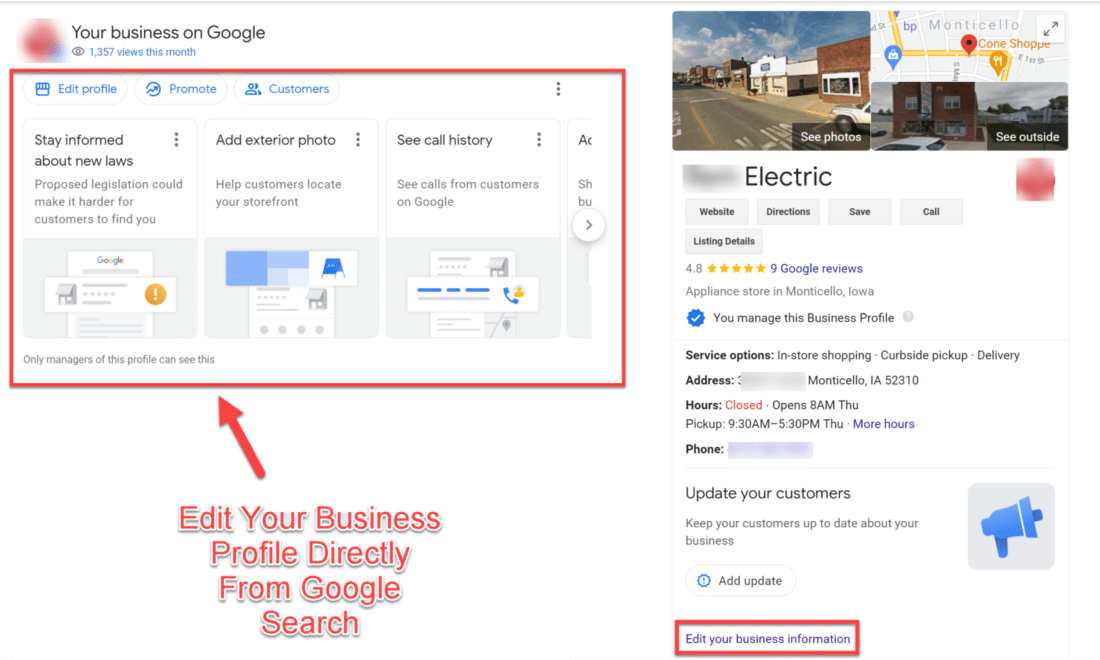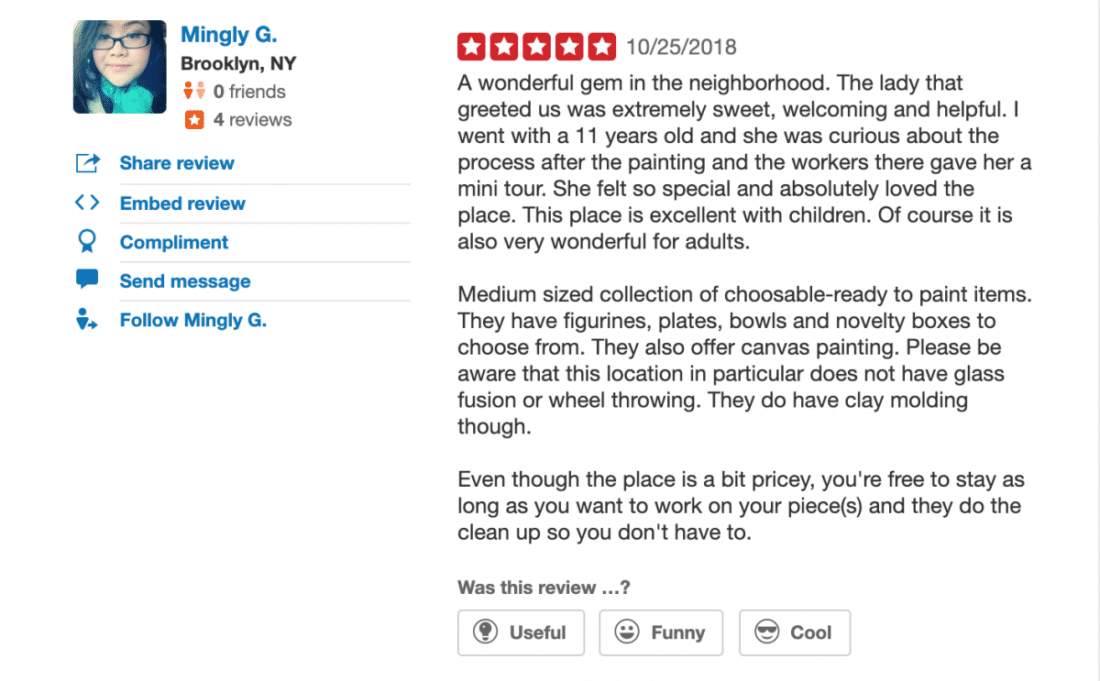Today search engines and review sites are the preferred way for customers to identify and visit a local business. In fact, 97% of people learn about a local business online. Local Search Engine Optimization (SEO) constitutes the art and science of helping your business show up for people searching for specific products and services.
Here are some of the stats to back up this trend:
- 69% of people say at least half of their searches have a local intent and 37% say more than two-thirds of their searches are local.
- [Available near me] searches increased 100% in 2021; [now near me] searches increased by 200% in 2021; and [along my route] searches marked 1,000% in 2020.
Thriving companies use local SEO strategy to grow their business. Local SEO can boost calls, visits and sales from people in your community. It increases the ability of people to discover your business while on the go as well as the ability to offer people what they want, when they want it.

Putting the Local in Search
Here is how local SEO works (via digital marketing agency Odd Dog Media):
- The local search results change depending on where you search from or what you search for. If you search for “florist Austin,” you’ll receive one set of results. If you search for “florist near me,” you’ll get another set of results. And searching for “florist open now” will give you yet another set of results.
- Just like in real estate, your business’s physical location will determine how and where you appear in the results.
- The maps that appear on local search are 4x more likely to convert into a paying customer than other sources.
- Reviews on your local listings are important.
- Any business that is local and serves local customers benefits from local SEO. This includes brick and mortar businesses (retail, lawyers, doctors) as well as service area businesses (HVAC, construction, plumbing, roofing).
Just Show Up
Local SEO means ensuring your business shows up where customers are actually looking. There are easy steps to take to do just that. First, implement a plan to measure and optimize website traffic. You can set up a plan in five easy steps:
- Research: Start by digging into everything from keywords and historical data to competitor analysis to identify opportunities for growth.
- Analytics: After determining what to monitor in the research phase, set up analytics and reporting to keep track of your campaign.
- Code Review: Take a look under your website’s hood and check for things like broken links, inconsistent coding, and user logic issues that could impede the search process.
- Execution: Optimize your website, build its authority, and identify content gaps.
- Quarterly Review: Track your performance and provide quarterly reviews so you can keep progressing your local SEO efforts.

Odd Dog conducted a survey on which characteristics landed local businesses at the top of search results. They discovered that the businesses had three things in common: a map with their location; a click-to-call phone number; and a link to click for directions. Those factors converted 4x the rate of any other source of traffic including ads, other organic search traffic, and referrals from other websites.
Google Goes Local
The number one place people go to search for a local business is on Google so make sure your Google Business Profile (GBP) is up to date. It is a free listing service that since its rebrand in 2021 (from Google My Business to GBP) is easier to update.

You can claim and update every location of your business from Google search and/or maps. This allows you to keep your hours, location, products and more up to date in real time, and you should! Sixty-four percent of consumers use GBP to find business addresses or phone numbers. It’s important to create a fully complete, accurate, guideline-abiding GBP listing for each location of your business.
Since local SEO for businesses is different than it is for other searches, Google’s algorithm weighs different ranking factors for searches with local intent. And when the search engine thinks you’re looking for a business located nearby, the Search Engine Results Page (SERP) is dominated by a map and a local pack of results. Businesses that make it into local packs enjoy a 100%+ increase in clicks and businesses in position two experience the most engagement. The primary category of your Google Business Page influences local pack rank more than any other factor—so choose wisely.

Google uses a variety of signals to serve search results. Signals for local SEO are like traditional website keywords, so be sure to include those search terms that apply to your business in your GBP listing. Local search ranking factors in 2020 showed GBP signals taking the largest slice of the pie with 33%. Reviews followed with 16%, while website on-page SEO and links tied for third at 15% each.
While GBP is a must for any local business location, don’t forget about your other local business listings. Having a citation on 31 to 40 other good platforms delivers an average visibility increase of 55-58%.
Rave Reviews
Consider online reviews as your sales force whether on Yelp, Open Table, or Nextdoor. Eighty-seven percent of consumers read reviews so they impact your local ranking. More than 50% of consumers won’t use a business if it has less than a four-star rating. Additionally, 88% of consumers trust online reviews as much as they trust personal recommendations. Reviews matter.

Review management is core to your customer service. Half of consumers expect companies to respond to reviews in two days or less. It’s vital to monitor and respond to all reviews as quickly as possible on every platform. Reviews are a two-way conversation so learn to inspire customers to edit negative reviews. It might also help to invest in software that allows you to monitor your reviews across multiple platforms to minimize response times.
What’s in Store
Using local SEO can optimize your local e-commerce strategy. Optimizing keywords like locations, categories, and conversational queries will provide local shoppers with information they’re looking for in store.
It’s important that your website loads quickly in order to be included in local shopping search results. One way to do this is via AMP, a resource that loads your mobile web pages quickly. Because pages created with AMP are consistently fast-loading, using it will increase your chances of showing up in more searches and yield more conversions.

What customers learn about local businesses from their Google listings is as important as what they share on their own website. No one doubts the power Google has over businesses in general but this takes it to an extra level for local businesses. This has led to multi-platform shopping experiences: websites, GBP, social media sites, and more.
However, while you are greeting customers with multi-platform shopping options, it is necessary to make your website the central hub of all this activity as much as you possibly can, particularly for repeat transactions. Don’t let any third party offer an easier shopping experience, better support, or more information than your own website does. The goal is to make the user experience so dynamic that one-off customers who found you elsewhere come directly to your site for their second purchase.
Local SEO has many moving parts, but it is easy to manage with the right mindset and strategy. Being as discoverable as possible will translate into new customers, ratings, and reviews. This, in turn, creates a cycle of additional visibility, clicks, and customers. Focusing on customer-centric, digital SEO strategies is a smart move for local businesses.
Image from Pixabay





Join the conversation